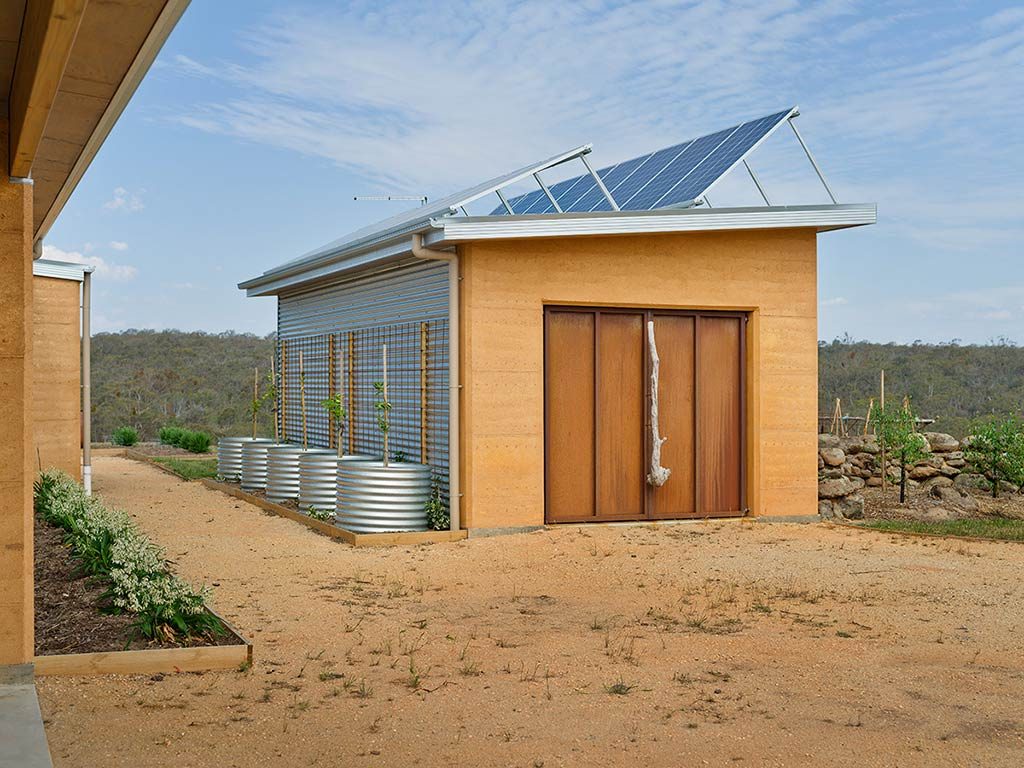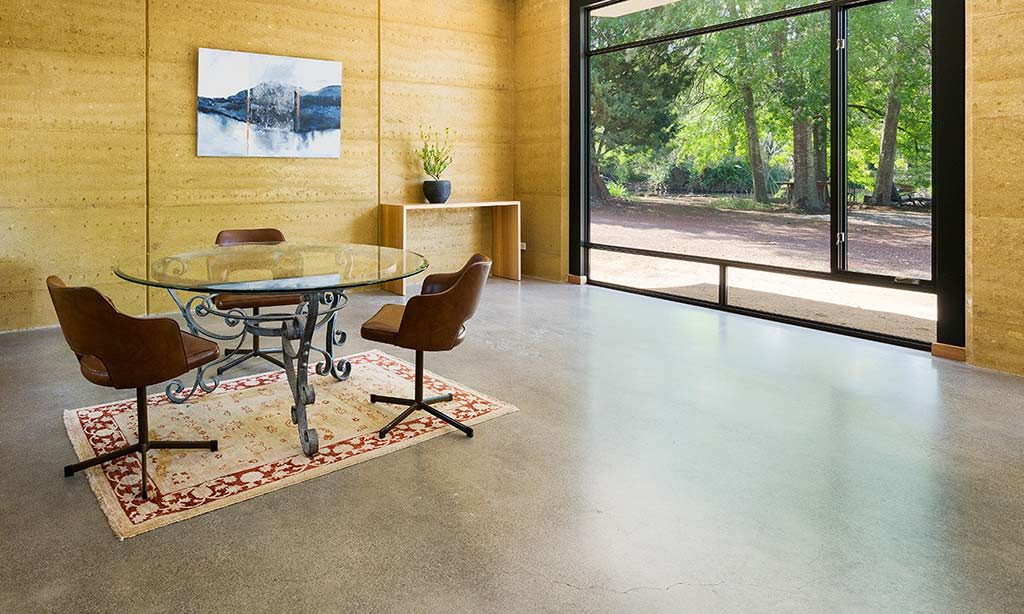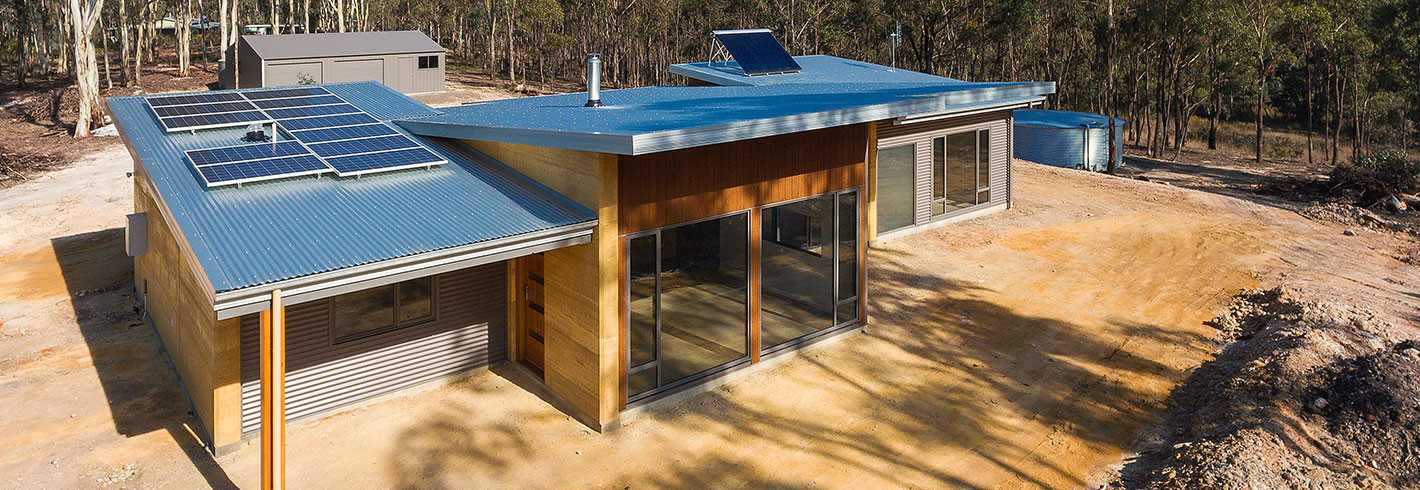Sustainable materials will have the most positive impact on our natural resources, as well as being better for our health. However it’s important to consider all factors of any materials sustainability rather than looking at only one aspect.
There are many factors influencing your choices regarding the sustainability of the materials for your new home build.
Sustainable factors to consider are:
The embodied energy used to produce the material (i.e. the initial amount of embodied energy used) and also the longevity of the material.
Replacement and maintenance of materials which initially have low embodied energy, may eventually turn out to produce a higher toll on the environment (recurring embodied energy).
Whereas a product which initially uses more embodied energy, does not require the same level of maintenance or frequency of replacement.
An example of this is Rammed Earth walls: The energy required to produce 1m2 of fired bricks will produce 300m2 of rammed earth.
The Rammed Earth construction technique and product is of a quality and durability that ensure it will be around for generations.
- Use an efficient design so that fewer materials are required for the build.
- Minimisation of material waste in the building process and recyclability of products e.g. Recycle metal off cuts.
- Utilising recycled materials where practical and possible e.g. fly ash in cement, recycled steel in reinforcing mesh in concrete slabs etc.
- Timber utilised is from Sustainable sources.
- Transportation of materials – if there is a choice between local and more distant materials you need to decide which to utilise but note the furthest as being less desirable environmentally.

Materials
Using greener materials is a great way to minimise your environmental impact as well as ensuring the sustainability of your home.
A sustainable building is constructed of materials that minimise life-cycle environmental impacts, such as global warming, resource depletion and human toxicity.
These environmentally preferable materials have a reduced negative effect on human health as well as the environment.
They aid in improving worker safety and health, reduce liabilities and disposal costs and most importantly, achieve environmental goals.
Selecting Building Materials
When you are selecting building materials for your home, ensure they:
- Reduce the impact on our natural environment and biodiversity for example avoid timbers from rainforest areas.
- Reduce the use of finite resources in accordance with achieving a sustainable eco-footprint.
- Efficient and effective use of resources in not only the materials and products, but also in the assembly and production during construction – improve output per unit input.
- Reduce waste generated during the materials life-cycle – Select sustainable materials with low maintenance and cleaning requirements.
- Opt for local materials and products where possible, to reduce transport energy impacts.
- Some materials may have adverse effects on indoor air quality and potentially harmful out-gassing can occur when incorrect materials are selected.
- Aim to utilise renewable, reusable, recycled and recyclable material content, and most importantly;
- Select materials, product components and assemblies that enhance human health and create the smallest environmental footprint.
Selecting Suitable Materials for your Project
There is no way of listing best to worst materials in relation to sustainability, as many factors need to be considered.
The Example of Flooring
For example if you look at Flooring materials, wood can be a far more sustainable material when it comes to embodied energy.
It can also be recycled for flooring, compared to the higher embodied energy of concrete – however when you consider the performance of the floor and the ability of concrete to conduct and store heat and cool it is a must for good solar passive design, especially on the north.
You can add fly ash and slag (these are residual products of burning coal and smelting iron ore) to reduce the carbon footprint of concrete.
Timber floors on the other hand can be susceptible to termites, requires insulation underneath and can have a far shorter life span as well as requiring maintenance of sanding and resealing over time.
The Manufacture Process and Transporting
The use of machines and manufacture of the products required for this over the life time as well as the extra energy to heat and cool due to the lack of conductivity and thermal mass need also to be added into the equation.
The preferences of the occupants, and also the distances materials need to be transported as well as other factors such as bushfire safety will also be a determining factor on the best choice for a particular project.

A Multitude of Factors
There are so many factors to consider in the materials themselves, as well as their performance over the life of the building that impact on which are the best choices for your home.
All Part of Our Service
This is one of the many things we do on an individual basis to ensure the best performance and sustainable options are provided for your custom build.

